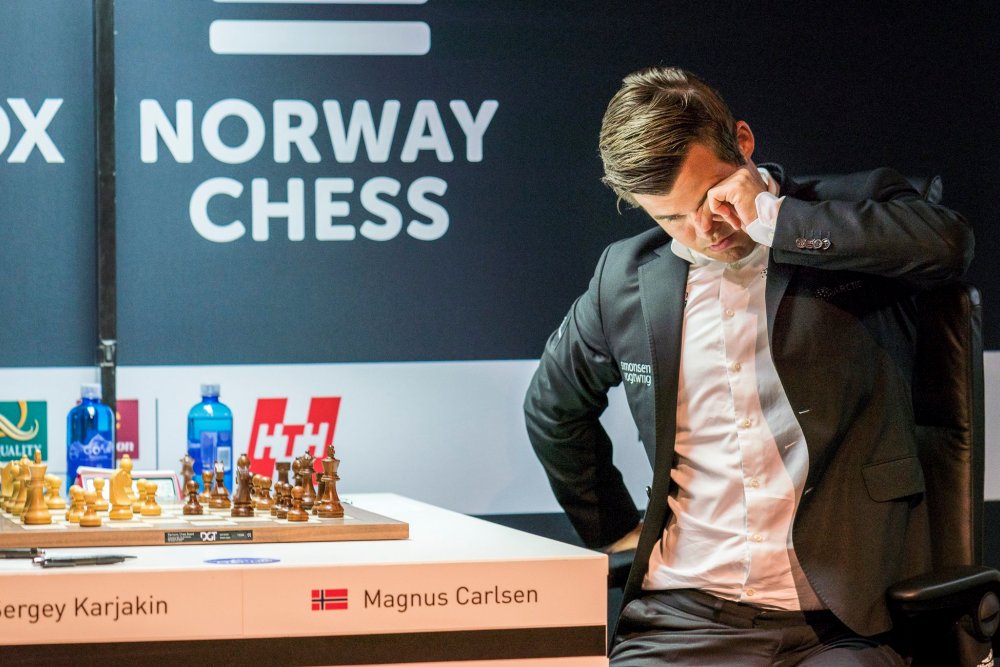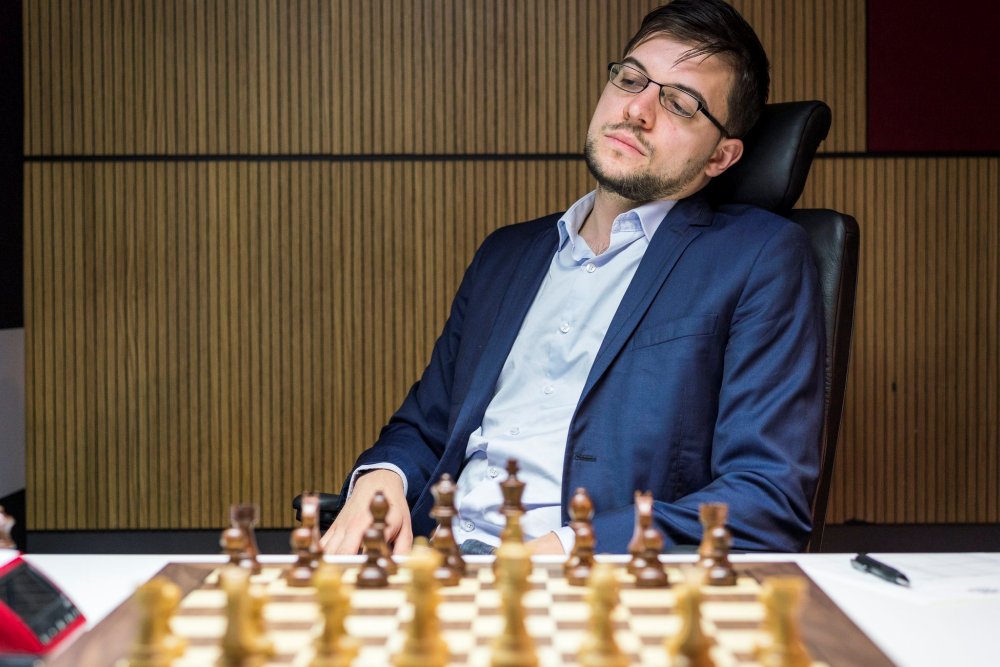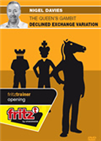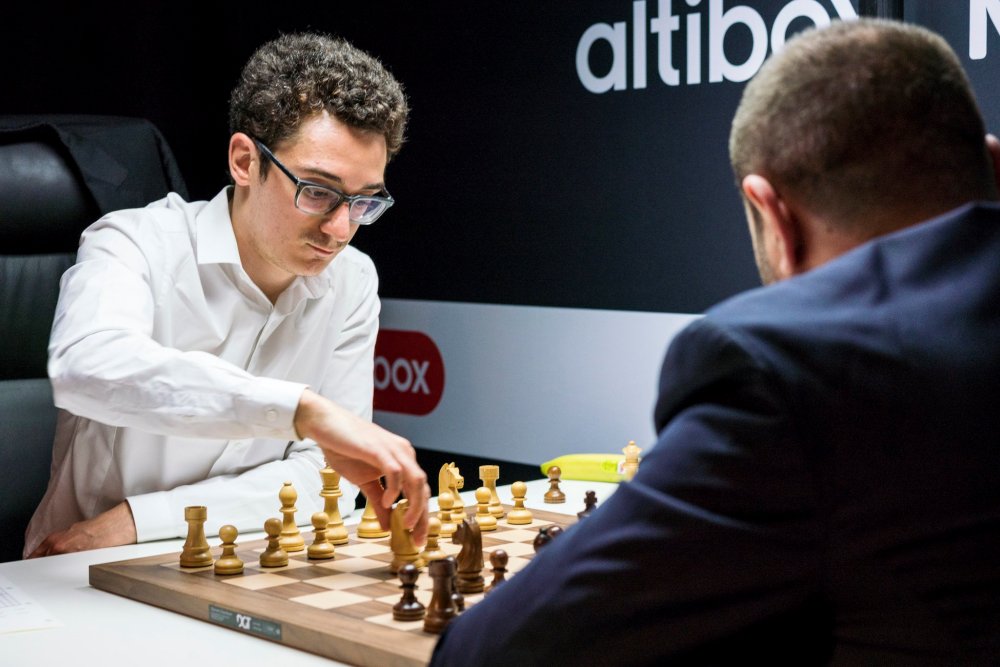Carlsen still only winner so far
The facts in brief: the draw coming out of the opening blitz tournament, made sure that Magnus Carlsen met his challengers (past and present) in the first two rounds. The first against current challenger Fabiano Caruana went well. Carlsen gained an edge with white and won in a strategic triumph. Turning the page on the opening round in a big tournament with a victory is already somewhat of a relief for the World Champion (remember losing on time to Topalov?). On Tuesday, the Magnus played against his previous challenger, Sergey Karjakin. It's a well-known fact that Carlsen had a hard time defeating the Russian defence artist in New York 18 months ago. Maybe today? No.

Still or already tired? | Photo: Lennart Ootes
Carlsen chose the Ruy Lopez, Arkhangelsk variation and then followed a game that Karjakin had played against Onischuk in Poikovsky eight years ago. The queens were exchanged early. On the fourteenth move, Carlsen was the first to depart from his predecessor with a small fineness.
Carlsen played 14...Bg4 rather than 14...Bf5.
 Scarcely any world champion has managed to captivate chess lovers to the extent Carlsen has. The enormously talented Norwegian hasn't been systematically trained within the structures of a major chess-playing nation such as Russia, the Ukraine or China.
Scarcely any world champion has managed to captivate chess lovers to the extent Carlsen has. The enormously talented Norwegian hasn't been systematically trained within the structures of a major chess-playing nation such as Russia, the Ukraine or China.With his move, the World Champion invited a capture on d6 and then went back with the bishop to f5 to gain a time in case of an exchange on f5, taking advantage of his lead in development to control the d-file. Karjakin did not take on f5, however, and quickly returned the pawn for easy equality in a rook endgame.
In the first round, Magnus Carlsen avoided the Petroff against Fabiano Caruana. Today the shoe was on the other foot for Fabiano. The US challenger played a Petroff from the white side against Shakhriyar Mamedyarov. Mamedyarov met 5.Nc3 in a modern way following Wang Hao from a game against Caruana, 2013, with a fianchetto of the queen's bishop b7.
Caruana had lost in 2013, but his time things went somewhat better, but not well enough to avoid an early draw on the 26th move.
"Avoidance" was also the topic in the game between Ding Liren and Maxime Vachier-Lagrave, because the Chinese had apparently no desire to deal with the theoretical knowledge of MVL in the Gruenfeld Defence.

Few want to take on MVL's Gruenfeld these days | Photo: Lennart Ootes
 Bologan: "If you study this DVD carefully and solve the interactive exercises you will also enrich your chess vocabulary, your King's Indian vocabulary, build up confidence in the King's Indian and your chess and win more games."
Bologan: "If you study this DVD carefully and solve the interactive exercises you will also enrich your chess vocabulary, your King's Indian vocabulary, build up confidence in the King's Indian and your chess and win more games."So Ding delayed the development of his knight to c3, until Black decided to play d6 instead of d5, after which a King's Indian Defense emerged, but one which is completely harmless for Black. This has happened before: Caruana and Nakamura have both grown weary of meeting the seemingly invulnerable Gruenfeld, and Caruana played similarly in Baden-Baden against Carlsen.
From Black's point of view, this is also nothing new — Maxime Vachier-Lagrave has faced such a strategy many times already. In this game, he got off to a good start and then tried to put pressure on the half-open f-file, but Ding usually neutralized the black initiative quickly.
er
The opening of the position with 25...d5 led to general exchanges and then to the draw by perpetual check in a queen ending.
Hikaru Nakamura attacked Viswanathan Anand in the Queen's Gambit Declined exchange variation. After taking on d5 Nakamura played 6.h3 and 7.Bf4, a manoeuvre that is played on autopilot by the supporters of the London system, but which is rather rare in the Queen's Gambit. Anand responded with early c5 and then quickly got rid of his isolated d5-pawn with the thematic break d5-d4, at the cost of giving White the bishop pair.
 The Queen’s Gambit Declined Exchange Variation is one of the most important opening systems, having been played by most of the great players in history and from both sides of the board. The most outstanding specialists in this method of play include Garry Kasparov, Mikhail Botvinnik and Samuel Reshevsky. The Black side proponents include Anatoly Karpov, Boris Spassky and Paul Keres. It is truly an opening of champions!
The Queen’s Gambit Declined Exchange Variation is one of the most important opening systems, having been played by most of the great players in history and from both sides of the board. The most outstanding specialists in this method of play include Garry Kasparov, Mikhail Botvinnik and Samuel Reshevsky. The Black side proponents include Anatoly Karpov, Boris Spassky and Paul Keres. It is truly an opening of champions!
Anand has seen his fair share | Photo: Lennart Ootes
 The Catalan is one of the most solid openings for White. It forms part of the large and strong fianchetto family in which White builds his strategy mainly around the bishop on g2. Grandmaster Victor Bologan covers all of Black’s replies to the Catalan, some of which can even transpose to other openings such as the Tarrasch System and the Queen’s Indian. Suffice it to say that the Catalan rules!
The Catalan is one of the most solid openings for White. It forms part of the large and strong fianchetto family in which White builds his strategy mainly around the bishop on g2. Grandmaster Victor Bologan covers all of Black’s replies to the Catalan, some of which can even transpose to other openings such as the Tarrasch System and the Queen’s Indian. Suffice it to say that the Catalan rules!After 21.Nd6 the game was balanced. Although Nakamura tried to engage his opponent in a few tactical skirmishes, he could not create much of an imbalance. A draw in the 29th move.
The only real theoretical duel was to be found in the game between Levon Aronian and Wesley So, in one of the main Catalan lines. On move fifteen, the U.S. Grandmaster took 15... Qxd4 (instead of 15...c6), a move that had rarely been played until now.
After the loss of the b7-pawn, the remaining black peasants on the queenside were splintered, but So soon found harmony in his position and had no problems whatsoever. No more than a draw was possible for either side.
Standings after two rounds
Round-up Show with Daniel King
Games of the round
Translation from German: Macauley Peterson
Links


























